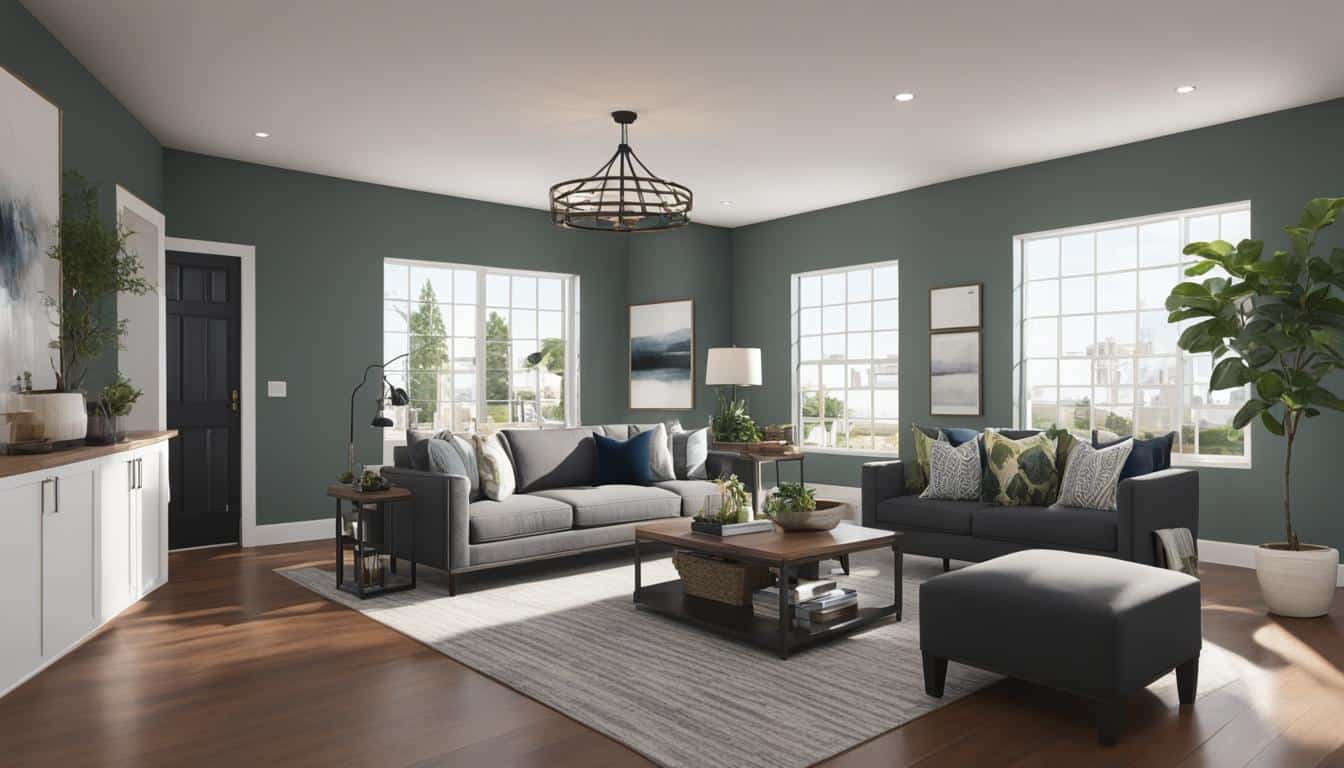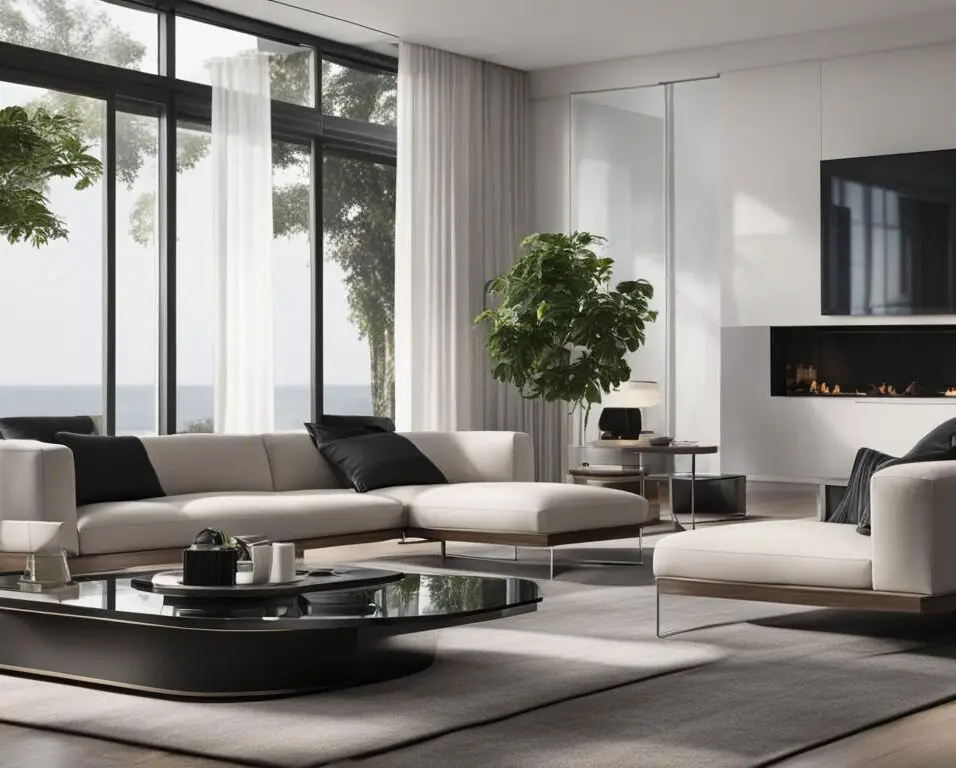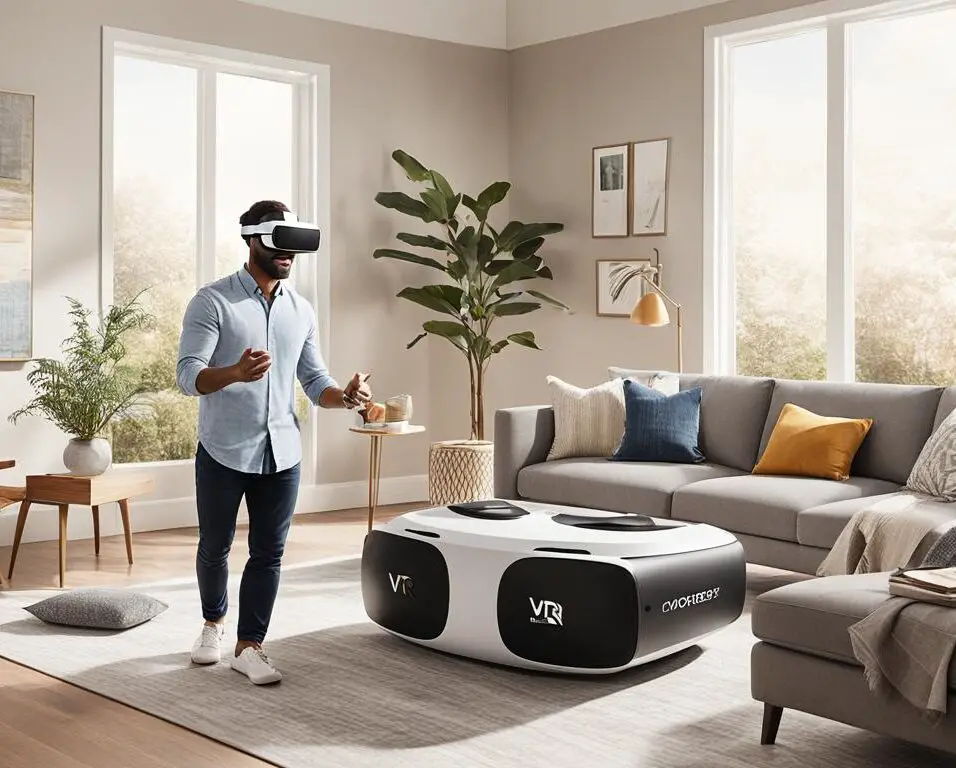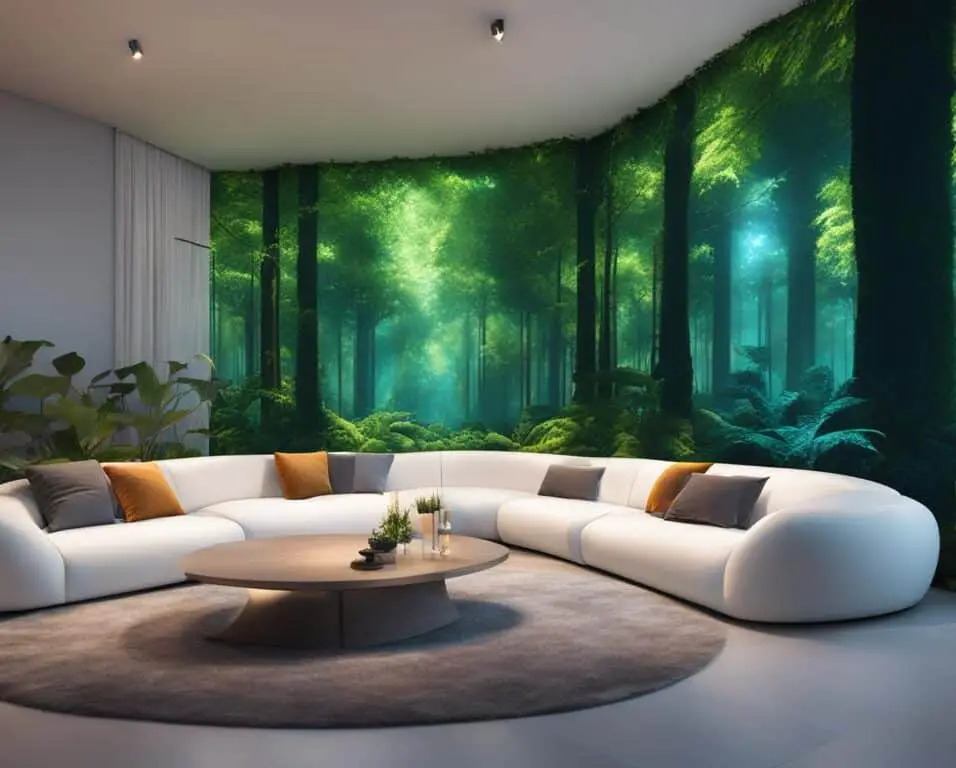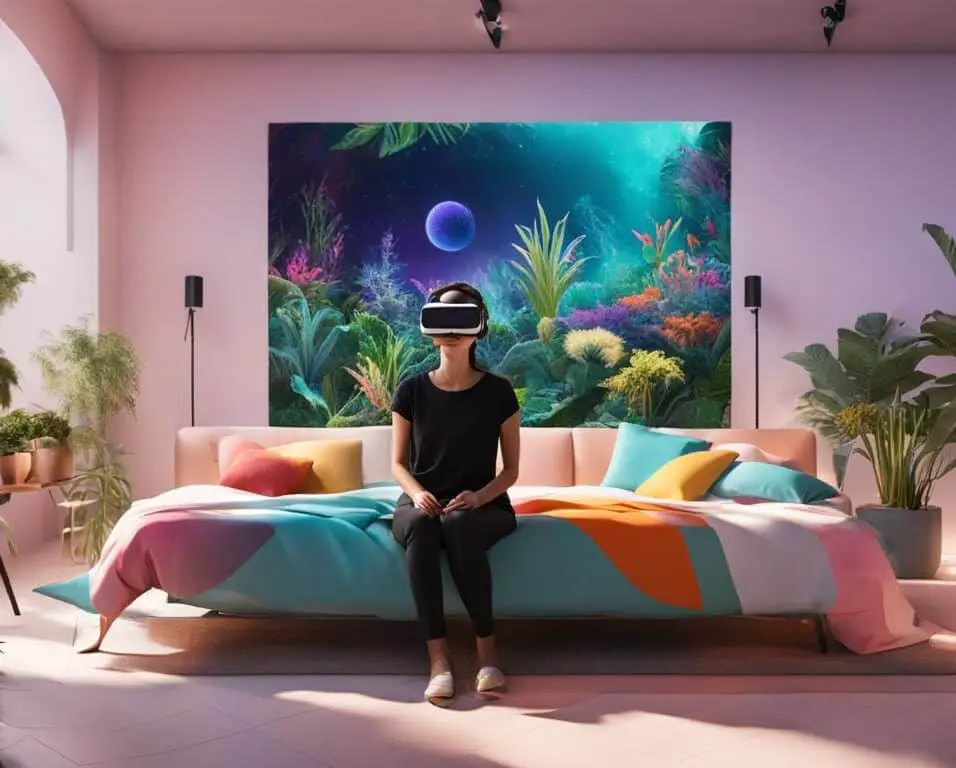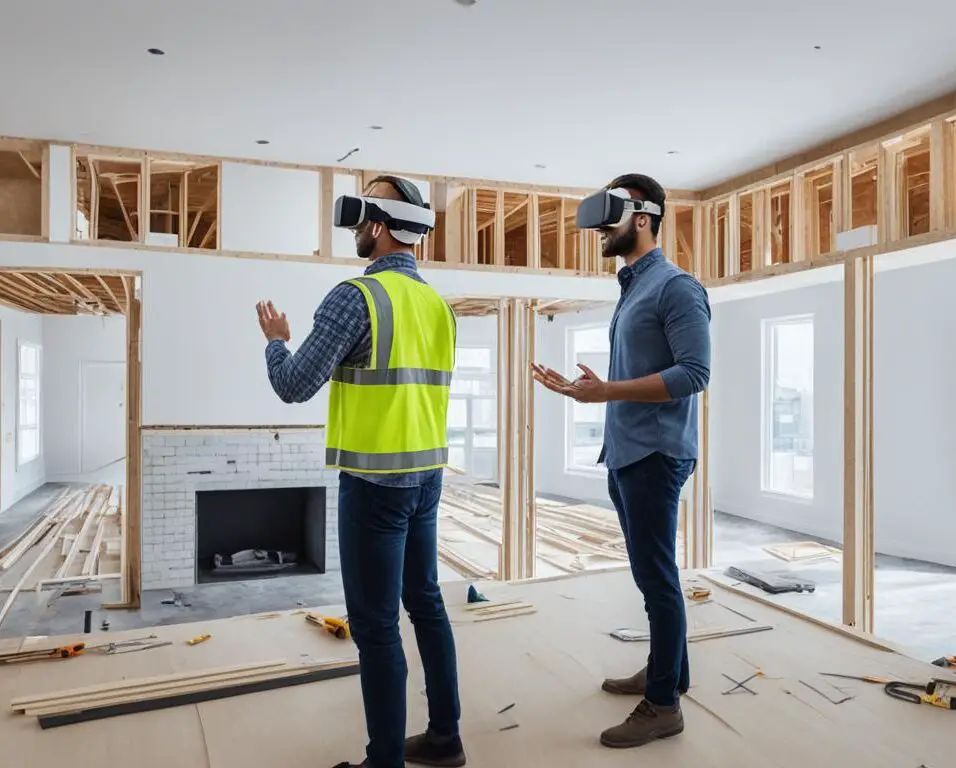Exploring Virtual Model Homes: A VR Tour Experience
Virtual model homes offer a transformative experience, allowing prospective buyers to explore properties remotely through virtual reality (VR) technology. With the advancement of VR, it has become easier than ever to immerse oneself in a virtual tour and gain a realistic sense of a property without physically being there.
In this article, I will delve into the process of setting up a virtual production studio for creating these immersive tours using VR technology. We will cover everything from clearing the room and installing the necessary equipment to showcasing the capabilities of virtual production studios in limited spaces.
Key Takeaways:
- Virtual model homes offer a realistic and immersive experience for prospective buyers.
- Setting up a virtual production studio is essential to create these VR tours.
- Clearing the room and installing the necessary equipment is the first step.
- Integrating camera footage with Unreal Engine allows for seamless blending of the real and virtual worlds.
- Virtual production studios have applications beyond entertainment, providing innovative solutions for various industries.
Setting up the Virtual Production Studio
When it comes to creating a virtual production studio, there are several essential steps to follow for a successful setup. This section will guide you through the process, from clearing the designated room to seamlessly integrating the virtual environment with camera footage.
To begin, it is crucial to clear the designated room and install a green screen. Using blackout materials for windows and walls is essential for controlling lighting and ensuring a clean background. This step sets the foundation for creating a professional and immersive virtual experience.
Next, unbox the camera tracking equipment and set up the tracking system. This involves arranging connective strips and foam pads to ensure accurate camera tracking. By carefully positioning the tracking elements, you can capture precise movements within the virtual environment.
Once the camera tracking system is in place, it’s time to install the necessary plug-ins and software. Getting the footage into Unreal Engine is a crucial step in the setup process. Unreal Engine provides powerful tools for creating realistic virtual environments and combining them with live camera footage.
Dealing with green screen reflection issues is another important aspect of the setup process. By using techniques to minimize reflections and shadows, you can achieve a clean and seamless integration between the live footage and the virtual environment. Additionally, setting up lighting with the Godox tl120s kit will enhance the overall visual quality and consistency of the production.
Lastly, using Unreal Engine’s composure feature, you can combine the green screen footage with the virtual environment. Composure allows for real-time integration, ensuring a smooth and cohesive viewing experience.
To summarize, the process of setting up a virtual production studio involves clearing the room, installing a green screen, setting up camera tracking equipment, installing software, dealing with green screen reflection issues, setting up lighting, and using composure in Unreal Engine to combine the footage. Each step contributes to creating an immersive and visually captivating virtual experience.
Example Equipment Setup:
Integrating Camera Footage with Unreal Engine
When it comes to creating immersive virtual experiences, integrating camera footage with Unreal Engine is a crucial step. By piping the footage from the camera directly into Unreal Engine and leveraging its composure feature, real-time integration becomes possible, seamlessly blending green screen footage with the virtual environment.
The core composition consists of two elements: the green screen footage captured by the camera and the computer-generated (CG) representation of the virtual environment. The green screen footage acts as the backdrop for the CG elements, creating a harmonious fusion of the real and virtual worlds.
“Integrating camera footage with Unreal Engine allows for a seamless visual experience, where the real and virtual environments merge effortlessly.”
To achieve proper synchronization between the camera footage and the virtual environment, keying is performed in Unreal Engine. This process adjusts the lighting and removes any unwanted elements in the green screen footage, ensuring a cohesive and realistic integration. Lighting plays a significant role in this integration, both in the physical studio and the virtual environment.
In the physical studio, the placement of key lights and backlights contributes to a smooth blend between the physical and virtual lighting. These lights mimic the lighting conditions of the virtual environment, enhancing the visual continuity and believability of the immersive experience.
By successfully integrating camera footage with Unreal Engine, creators can deliver captivating virtual experiences that transport users into a world where reality and imagination seamlessly coexist.
The Benefits of Integrating Camera Footage with Unreal Engine
- Real-time integration of camera footage and virtual environment
- Seamless blending of the real and virtual worlds
- Enhanced visual continuity and believability
- Immersive experiences that captivate and engage users
Overcoming Challenges in Virtual Production Studios
Virtual production studios offer endless possibilities for creating immersive experiences, but they also come with their fair share of challenges. In this section, we will discuss some of the common hurdles faced in virtual production studios and explore ways to overcome them.
Green Screen Reflection Issues
One of the primary challenges in virtual production studios is dealing with green screen reflection issues. When working with a green screen, unwanted reflections can create distortions and affect the overall quality of the footage.
To overcome green screen reflection issues, it is essential to set up proper lighting and use materials that minimize reflections. Additional measures such as applying anti-reflective coatings or using specialized filters can further enhance the overall visual quality.
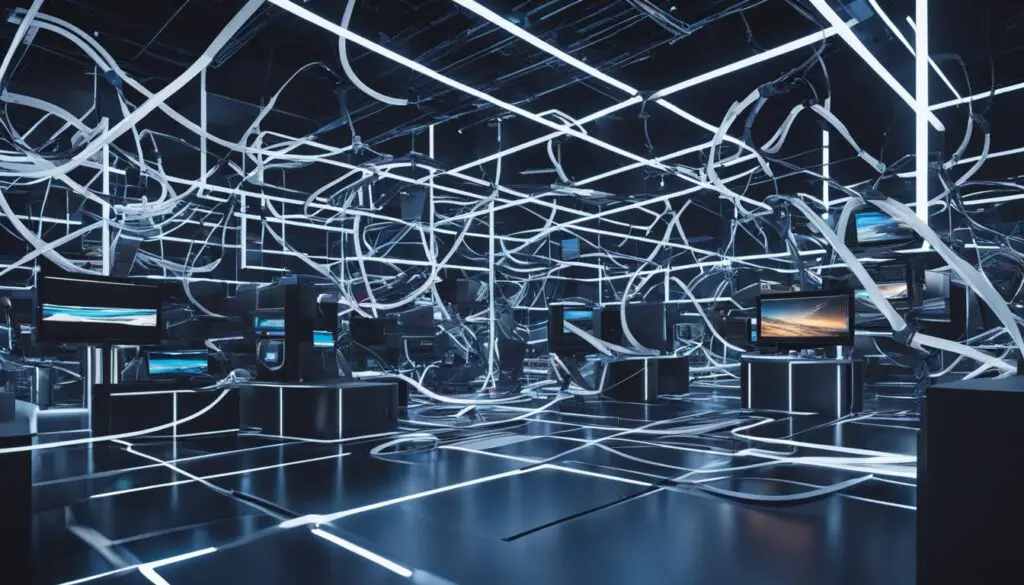
Addressing Latency Problems
Latency, or the delay in data transmission, can be a significant challenge in virtual production studios. When working with real-time tracking systems, any delay can lead to inaccurate camera tracking and synchronization between the real and virtual worlds.
To address latency problems, it is crucial to use high-quality tracking systems with minimal latency. Additionally, optimizing network connections and utilizing anti-latency technologies can help minimize delays and ensure smooth and accurate camera movements.
Optimizing Lighting Setups
Lighting plays a crucial role in creating a seamless blend between the physical and virtual environments in virtual production studios. Achieving consistent lighting across the set is essential for a visually cohesive experience.
To optimize lighting setups, it is important to strategically place key lights and backlights to complement the virtual environment. Using professional lighting kits, such as the Godox kit of tl120s, can help achieve the desired lighting effects and create a harmonious blend between the real and virtual worlds.
Utilizing Anti-Latency Tracking Systems
Accurate camera tracking is vital for creating realistic virtual environments. Anti-latency tracking systems can help minimize delays and ensure precise camera movements, improving the overall immersive experience.
By utilizing anti-latency technologies, such as optical tracking systems and high-speed data transmission protocols, virtual production studios can overcome the challenges associated with latency and achieve accurate camera tracking in real time.
By understanding and addressing these challenges, virtual production studios can unlock their full potential and create immersive experiences that captivate audiences. With the right equipment, techniques, and best practices, these challenges can be effectively managed, paving the way for groundbreaking virtual productions.
Applications and Benefits of Virtual Production Studios
Virtual production studios offer a wide range of applications and benefits that go beyond the entertainment industry. With advanced technology and innovative approaches, these studios have transformed various fields, including:
- Filmmaking
- Gaming
- Education
- Healthcare
Virtual production studios have revolutionized the way films are made, allowing filmmakers to create realistic virtual environments and integrate actors seamlessly. This immersive technology enhances storytelling capabilities, resulting in visually stunning cinematic experiences that captivate audiences.
“Virtual production studios have completely changed the game for us. They provide a level of visual freedom and creativity that was unimaginable before.”
Gaming has also benefitted greatly from virtual production studios. Developers can now build immersive virtual worlds and capture dynamic full-body shots, making gameplay more engaging and immersive than ever.
In the education sector, virtual production studios have opened up new avenues for interactive learning experiences. Students can explore historical places, scientific concepts, or even take virtual field trips, providing them with a hands-on and engaging learning environment.
Healthcare professionals are utilizing virtual production studios to train and educate medical students and practitioners. Virtual simulations allow them to practice complex procedures and scenarios in a safe and controlled environment, improving patient care and reducing risks.
Benefits of Virtual Production Studios:
- Enhanced Creativity: Virtual production studios provide a canvas for unlimited creativity, allowing artists and creators to bring their imagination to life.
- Cost Efficiency: These studios offer significant cost savings compared to traditional production methods, making them accessible to a wider range of industries.
- Flexibility and Adaptability: Virtual production studios can be tailored to specific needs, providing flexibility for different projects and environments.
- Real-time Collaboration: Teams can work together seamlessly in virtual production studios, regardless of their physical location, leading to streamlined workflows and efficient project management.
- Improved Visual Quality: The integration of physical and virtual elements in these studios results in high-quality visuals and realistic environments.
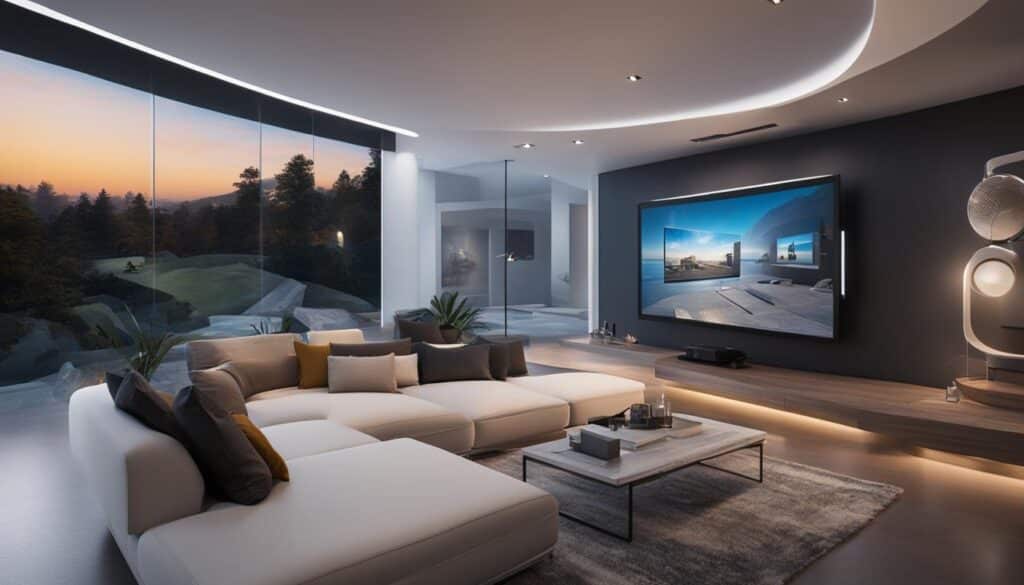
Virtual production studios are transforming industries and revolutionizing the way we create and experience various forms of media. With their applications and benefits, these studios have the power to shape the future of storytelling and visual experiences.
Conclusion
Building a virtual production studio opens up a world of possibilities for creating immersive virtual model home tours using VR technology. Even in limited spaces, with proper setup procedures that include clearing the room and installing the necessary equipment, you can achieve remarkable results. Integrating camera footage seamlessly with Unreal Engine allows for real-time integration of green screen footage with the virtual environment, enhancing the overall experience.
While challenges such as green screen reflection and latency may arise, they can be overcome with the right techniques and equipment. By addressing these issues, you can ensure a seamless and lifelike experience for your audience.
The applications and benefits of virtual production studios extend far beyond entertainment. Industries such as filmmaking, gaming, education, and healthcare can leverage this technology to create immersive experiences for their audiences. The ability to capture full-body shots even in limited spaces opens up new possibilities for visual storytelling and enhances the overall delivery of content. By embracing virtual production studios, you are embracing the future of immersive experiences and revolutionizing the way stories are told.
FAQ
What is a virtual model home?
A virtual model home is a digital representation of a real estate property that allows prospective buyers to explore the space remotely using virtual reality (VR) technology.
How do virtual production studios work?
Virtual production studios utilize VR technology to create immersive experiences. By integrating camera footage with Unreal Engine, they seamlessly blend physical and virtual environments to deliver exceptional visual experiences.
What is the process of setting up a virtual production studio?
The setup process involves clearing the designated room, installing a green screen, setting up camera tracking equipment, arranging connective strips and foam pads, installing necessary plug-ins, and configuring lighting and composure in Unreal Engine.
What challenges are associated with virtual production studios?
Virtual production studios come with challenges such as green screen reflection issues and latency problems. These can be overcome by adjusting lighting setups, utilizing anti-latency tracking systems, and following best practices in camera tracking and synchronization.
What are the applications and benefits of virtual production studios?
Virtual production studios have diverse applications across industries such as filmmaking, gaming, education, and healthcare. They offer innovative solutions for creating immersive experiences and enhance storytelling capabilities.



